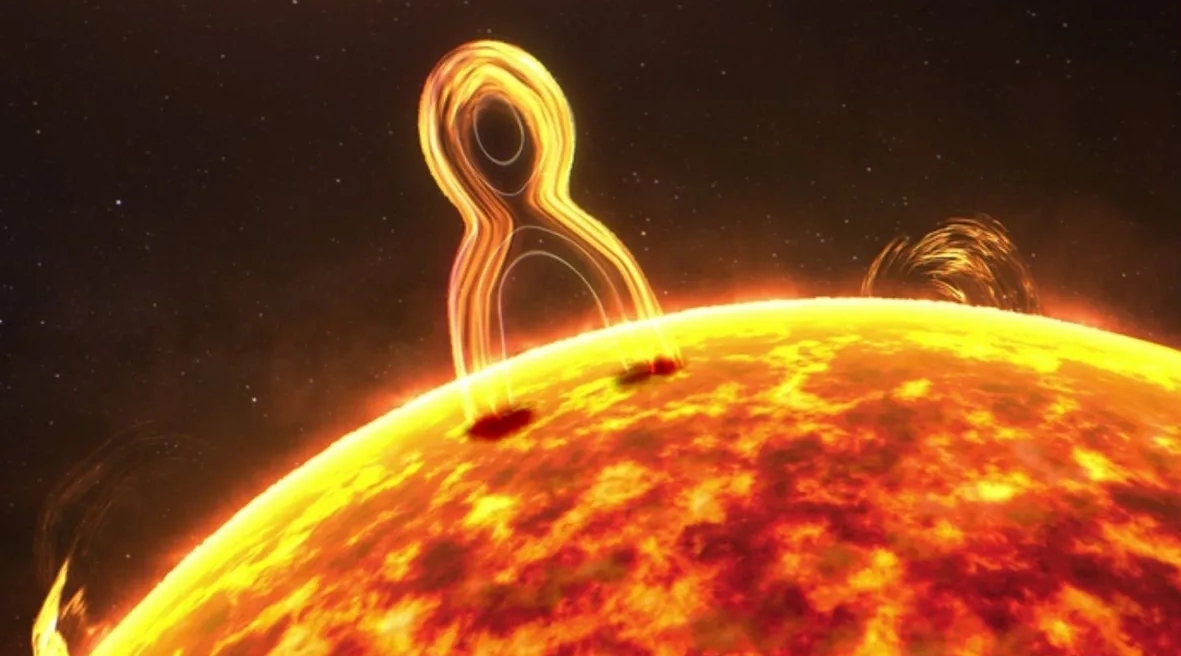This past Sunday evening, a massive shockwave slammed into the magnetic field of Earth, effectively cracking the magnetosphere which protects the planet from extreme radiation.
Known as the geomagnetic field, Earth’s magnetic field stretches from the core of the planet all the way out multiple thousands of miles into space. A series of electric currents spawned due to various convection currents caused by molten iron and nickel in the outer core of Earth create a powerful magnetic field around the planet. The power from the magnetic field can have massive effects on weather patterns and all global-scale communication.”
“The shock wave may have been a CME emitted last week by sunspot AR3165 during its hyperactive flurry of solar flares,” explained SpaceWeather.com.
CME WATCH – 2022.12.19: A series of spectacular CMEs off the west limb. The question is though are any of them well placed to send a geomagnetic storm towards Earth? WE'll have to wait for the heliospheric models to see the probability forecast. pic.twitter.com/40D2DdGJ17
— Keith Strong (@drkstrong) December 20, 2022
These types of shockwaves are most often associated with more extreme solar storms. As explained by Live Science, the largest solar storm ever recorded took place back in 1859. Now called the Carrington Event, the massive storm is thought have released an amount of energy equivalent to the explosions of 10 billion 1-megaton atomic bombs, destroying entire telegraph systems all over the planet.
Just last week, M-class solar flares slammed into the planet. Solar Flares travel at the speed of light, hitting the planet in just under eight minutes after departing the edge of the sun. X-class flares are marked as the most powerful type of solar flares with M-class being just behind them.
Currently, the sun is moving into the most active section of its standard 11-year solar cycle with its peak activity thought to take place in 2025. After the string of solar flares from last week, Keith Strong, a solar physicist, spoke out in warning to say, “THREE MORE M FLARES: An M6, M3 and M2 all from AR3165.That makes 8 M flares so far today. They seem to be getting bigger, is an X flare in the offing? Stay tuned.”
THREE MORE M FLARES: An M6, M3 and M2 all from AR3165. That makes 8 M flares so far today. They seem to be getting bigger, is an X flare in the offing? Stay tuned. pic.twitter.com/pjpbRhfTYo
— Keith Strong (@drkstrong) December 14, 2022
To imagine the magnetic field of the planet, one could think about a bar magnet with the planet aligned with the poles of the Earth. Magnetic poles are located in the areas where the magnetic lines of attraction go back into Earth. The magnetic north pole sits close to Ellesmere Island in Northern Canada.
A planet can create a magnetic field if its rotation moves at a fast enough pace, the planet contains a fluid medium that can conduct electricity, and has a core sporting an energy course that generates convection currents, explained experts from National Geographic.

